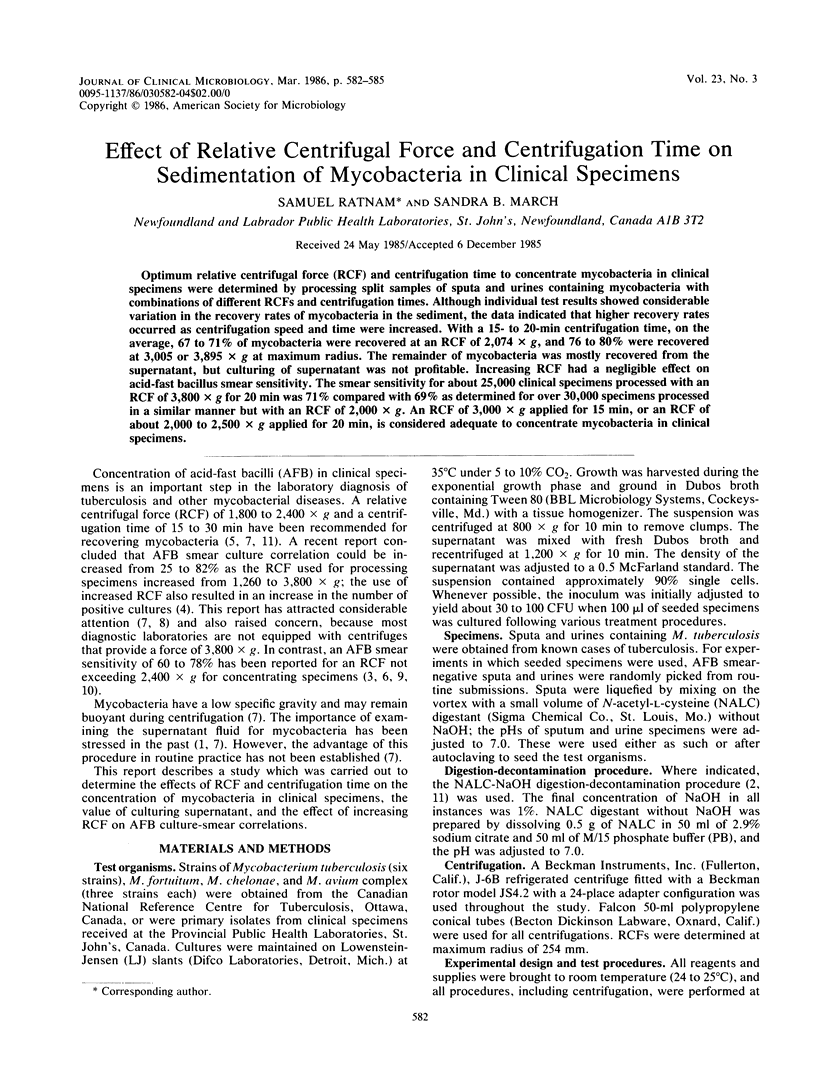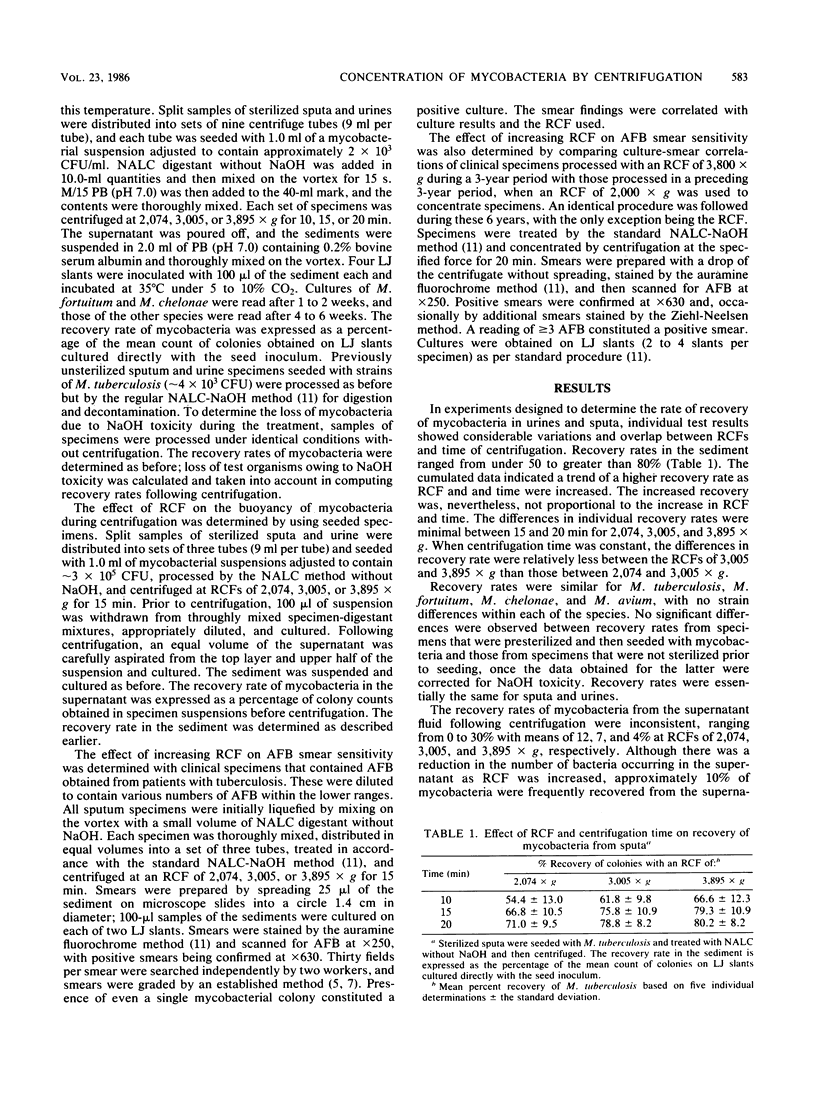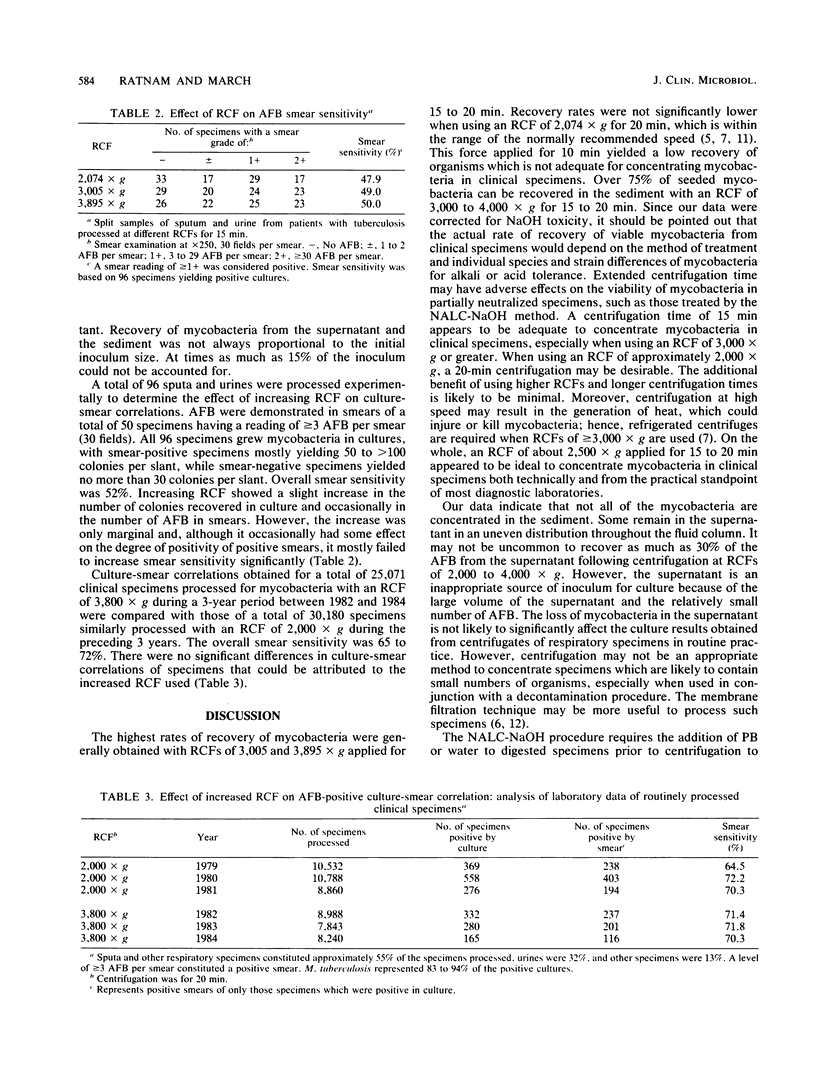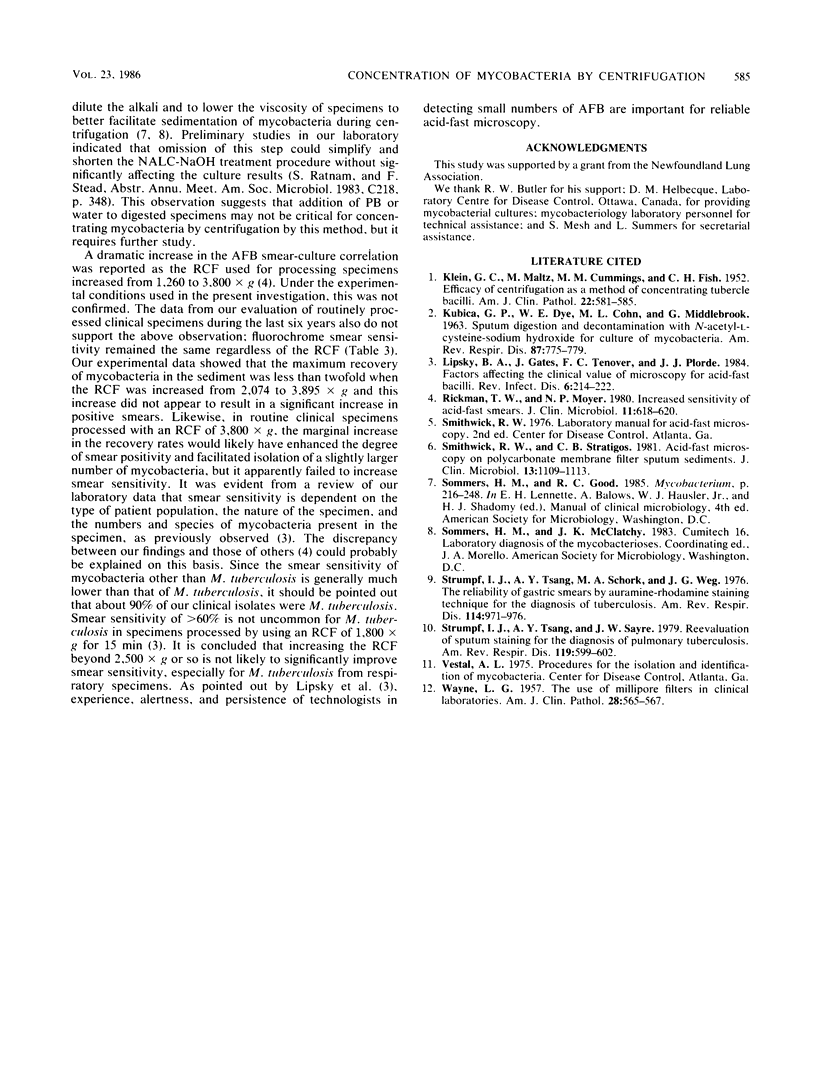Abstract
Optimum relative centrifugal force (RCF) and centrifugation time to concentrate mycobacteria in clinical specimens were determined by processing split samples of sputa and urines containing mycobacteria with combinations of different RCFs and centrifugation times. Although individual test results showed considerable variation in the recovery rates of mycobacteria in the sediment, the data indicated that higher recovery rates occurred as centrifugation speed and time were increased. With a 15- to 20-min centrifugation time, on the average, 67 to 71% of mycobacteria were recovered at an RCF of 2,074 X g, and 76 to 80% were recovered at 3,005 or 3,895 X g at maximum radius. The remainder of mycobacteria was mostly recovered from the supernatant, but culturing of supernatant was not profitable. Increasing RCF had a negligible effect on acid-fast bacillus smear sensitivity. The smear sensitivity for about 25,000 clinical specimens processed with an RCF of 3,800 X g for 20 min was 71% compared with 69% as determined for over 30,000 specimens processed in a similar manner but an RCF of 2,000 X g. An RCF of 3,000 X g applied for 15 min, or an RCF of about 2,000 to 2,500 X g applied for 20 min, is considered adequate to concentrate mycobacteria in clinical specimens.
Full text
PDF



Selected References
These references are in PubMed. This may not be the complete list of references from this article.
- KLEIN G. C., MALTZ M., CUMMINGS M. M., FISH C. H. Efficacy of centrifugation as a method of concentrating tubercle bacilli. Am J Clin Pathol. 1952 Jun;22(6):581–585. doi: 10.1093/ajcp/22.6_ts.581. [DOI] [PubMed] [Google Scholar]
- KUBICA G. P., DYE W. E., COHN M. L., MIDDLEBROOK G. Sputum digestion and decontamination with N-acetyl-L-cysteine-sodium hydroxide for culture of mycobacteria. Am Rev Respir Dis. 1963 May;87:775–779. doi: 10.1164/arrd.1963.87.5.775. [DOI] [PubMed] [Google Scholar]
- Lipsky B. A., Gates J., Tenover F. C., Plorde J. J. Factors affecting the clinical value of microscopy for acid-fast bacilli. Rev Infect Dis. 1984 Mar-Apr;6(2):214–222. doi: 10.1093/clinids/6.2.214. [DOI] [PubMed] [Google Scholar]
- Rickman T. W., Moyer N. P. Increased sensitivity of acid-fast smears. J Clin Microbiol. 1980 Jun;11(6):618–620. doi: 10.1128/jcm.11.6.618-620.1980. [DOI] [PMC free article] [PubMed] [Google Scholar]
- Smithwick R. W., Stratigos C. B. Acid-fast microscopy on polycarbonate membrane filter sputum sediments. J Clin Microbiol. 1981 Jun;13(6):1109–1113. doi: 10.1128/jcm.13.6.1109-1113.1981. [DOI] [PMC free article] [PubMed] [Google Scholar]
- Strumpf I. J., Tsang A. Y., Sayre J. W. Re-evaluation of sputum staining for the diagnosis of pulmonary tuberculosis. Am Rev Respir Dis. 1979 Apr;119(4):599–602. doi: 10.1164/arrd.1979.119.4.599. [DOI] [PubMed] [Google Scholar]
- Strumpf I. J., Tsang A. Y., Schork M. A., Weg J. G. The reliability of gastric smears by auramine-rhodamine staining technique for the diagnosis of tuberculosis. Am Rev Respir Dis. 1976 Nov;114(5):971–976. doi: 10.1164/arrd.1976.114.5.971. [DOI] [PubMed] [Google Scholar]
- WAYNE L. G. The use of millipore filters in clinical laboratories. Am J Clin Pathol. 1957 Nov;28(5):565–566. doi: 10.1093/ajcp/28.5_ts.565. [DOI] [PubMed] [Google Scholar]


